

Mobile Site Preview. The Avian Head Induces Cues for Sound Localization in Elevation. Accurate sound source localization in three-dimensional space is essential for an animal’s orientation and survival.
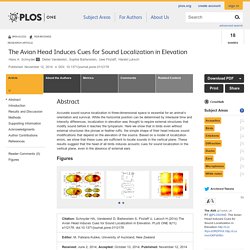
Meet the glass winged butterfly. Bizarre Cloud Formation Spotted In Australian Skies. Fluffy, streaky, wispy, marshmallow-like clouds can be a pretty spectacular sight sometimes, but this particular formation really takes the biscuit.

It may look too perfect to be real, but these images aren’t fakes. They were snapped around 1:00pm on Monday, November 3 in Victoria, Australia, by ABC News audience members.
Bees. Effects on Nature. Wildlife Photographer of the Year 2014: Sneak preview. About Wildlife Photographer of the Year 2014 Wildlife Photographer of the Year is 50 years old and the competition is stronger than ever, offering an incredible view of the natural world, highlighting conservation issues and developing talent.
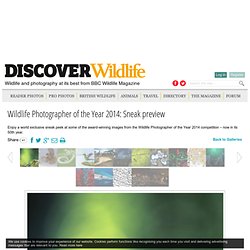
We present here an exclusive preview of images from this year’s premier collection of 100 photographs. They were chosen from almost 42,000 entries representing 96 countries. The 2014 competition also marks two milestones: the launch 50 years ago of Wildlife Photographer of the Year and 30 years of collaboration between BBC Wildlife and the Natural History Museum. To enjoy some of these images in print, don't miss the September issue of BBC Wildlife. BBC Radio 4 - Tweet of the Day - Episode guide. To ID birds, try facial recognition. Birding just got easier.
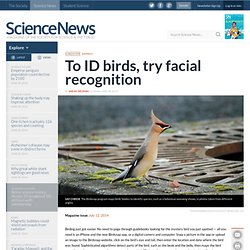
No need to page through guidebooks looking for the mystery bird you just spotted — all you need is an iPhone and the new Birdsnap app, or a digital camera and computer. Snap a picture in the app or upload an image to the Birdsnap website, click on the bird’s eye and tail, then enter the location and date where the bird was found. Sophisticated algorithms detect parts of the bird, such as the beak and the belly, then maps the bird according to “a common coordinate system from which [Birdsnap] can extract features for the identification system,” explains one of Birdsnap’s creators, computer scientist Peter Belhumeur of Columbia University. This is similar to how facial recognition systems map features such as the nose and eyebrows to identify people, even when they’re not facing a camera head-on.
Qikipedia : Meet the superbly camouflaged ... The Chemical Compounds Behind The Smell Of Rain. Where’s All The Animal Vagina Research? In 2009, duck penises took the Internet by storm.

Thanks to a newly published study and an eye-opening video, people learned that while most birds lack penises at all, male ducks have huge, corkscrew-shaped ones. Butterfly Conservation - Home. Fantastic Fungi: The Startling Visual Diversity of Mushrooms Photographed by Steve Axford. Marasmius haematocephalus To think any one of these lifeforms exists in our galaxy, let alone on our planet, simply boggles the mind.
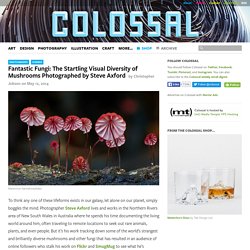
Photographer Steve Axford lives and works in the Northern Rivers area of New South Wales in Australia where he spends his time documenting the living world around him, often traveling to remote locations to seek out rare animals, plants, and even people. Tracking Cuckoos to Africa... and back again. Project Noah. Conservationists and marksmen of Malta battle over annual bird hunt. As dawn breaks over the sea and ancient stone churches turn pink, the morning's stillness is broken by volleys of gunfire.

Tucked behind walls, sitting on armchairs in specially built turrets or else popping up from old stone sheds, Malta's marksmen open fire as migrating birds flap desperately for cover. When it comes to bird hunts, this is one of Europe's more uneven contests. Birds flying over the islands of Malta on their annual migration to northern Europe must evade 31 licensed marksmen per square kilometre – 15 times more than in shooting-friendly France.
Extreme Macro – Mind-blowing Insect Photos by Johan J.Ingles-Le Nobel. The Oldest Living Things in the World: A Decade-Long Photographic Masterpiece...
WWF Footprint Calculator. Click Clean - Greenpeace. We love the Internet!

But as we store, share and stream more of our lives online, the internet grows bigger every day. Cloud spotting: a beginner's guide to predicting the weather. Check the clouds, and plan your outfit.
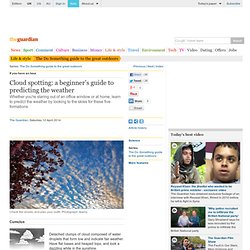
Photograph: Alamy Cumulus Cumulus clouds: fair weather. Illustration: Ben Lamb for the Guardian Detached clumps of cloud composed of water droplets that form low and indicate fair weather. Altocumulus Altocumulus: bad weather. Appears as rolls of cloud, or layered patches in the mid-level region. Cirrus. True Facts About The Owl. Desert Rain Frog: Dangerous Beast or Adorable Squeaky Toy? Animal welfare and conservation charity. Why do cats purr? Although it’s easy to assume that cats purr because they’re content, research shows that purring is likely a means of communication and a form of self-healing.
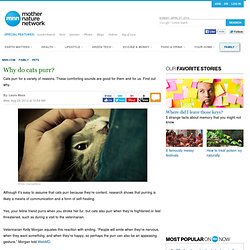
Yes, your feline friend purrs when you stroke her fur, but cats also purr when they’re frightened or feel threatened, such as during a visit to the veterinarian. Veterinarian Kelly Morgan equates this reaction with smiling. “People will smile when they’re nervous, when they want something, and when they’re happy, so perhaps the purr can also be an appeasing gesture,” Morgan told WebMD. A cat’s purr begins in its brain. A repetitive neural oscillator sends messages to the laryngeal muscles, causing them to twitch at a rate of 25 to 150 vibrations per second.